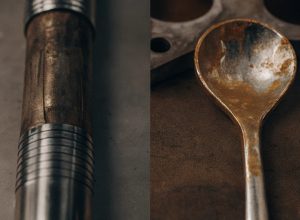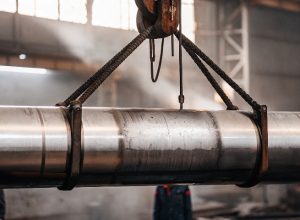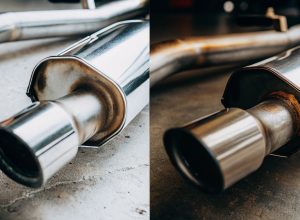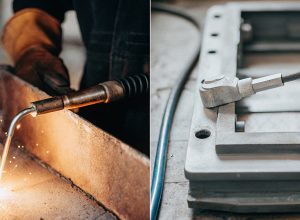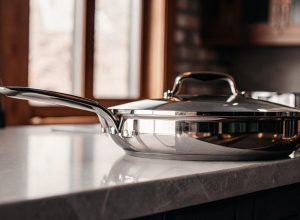Struggling with the reliability of thin-walled titanium components? The welding process, while necessary, often compromises the material’s integrity, creating a potential point of failure in critical applications. This is a risk you can’t afford in industries like medical or aerospace.
Heat treatment is crucial because it relieves internal stresses1 from welding, refines the grain structure2, and restores the tube’s original strength and ductility. This process ensures the component is reliable, safe, and meets strict industry standards for high-performance applications.
The performance of a final product often depends on tiny details that are easy to overlook. For sourcing specialists like Emily, who must guarantee that every component meets stringent FDA and CE standards3, understanding the post-welding process is just as important as the raw material itself. A perfectly good titanium alloy can fail if the stress introduced during fabrication isn’t correctly managed. Let’s dive into the specific challenges and how we address them through meticulous heat treatment.
What are the main challenges with welded thin-wall titanium tubes?
You’ve sourced high-quality titanium tubes, but the welding required for fabrication introduces new problems. These hidden defects can compromise the entire component, leading to costly failures. Understanding these specific risks is the first step to ensuring true quality control.
The primary challenges are residual stress4 at the weld zone, which can cause cracking, and coarse grain growth5, which reduces toughness. The thin walls also make the tubes prone to warping or distortion during improper heating and cooling cycles.
The term "residual stress" refers to the internal forces locked within the metal after it cools from welding. This stress acts like a pre-loaded spring, making the material more susceptible to fatigue cracking and stress corrosion, especially in demanding environments. For someone like Emily, sourcing for medical implants, such a flaw is unacceptable. The second major issue, grain growth, occurs in the heat-affected zone (HAZ)6 next to the weld. The intense heat causes the microscopic crystal grains of the titanium to grow larger, which unfortunately reduces the material’s overall toughness and ductility. This can make the tube brittle and unable to withstand the mechanical loads it was designed for. Finally, the very nature of thin-walled tubes makes them incredibly sensitive to thermal changes. Without precise control, the heating and cooling of a heat treatment cycle can cause the tube to warp, twist, or lose its dimensional accuracy, rendering it useless. From my experience, I’ve seen many components fail not because of the base material, but because of improperly managed residual stress in the weld. It’s a silent threat to a part’s longevity and reliability.
Which heat treatment techniques are most effective?
Knowing that heat treatment is necessary is one thing, but choosing the right method is another. Applying the wrong thermal process can fail to solve the initial problems or even introduce new ones, wasting time and materials. The key is to match the technique to the specific alloy and application needs.
The most common techniques are stress-relief annealing and full annealing7. Stress relief uses lower temperatures to reduce internal stresses without significantly changing the microstructure, while full annealing recrystallizes the grain structure for maximum ductility and toughness.
The choice between these processes depends entirely on the desired outcome. We often work with clients like Emily who need to balance strength and formability for components that might undergo further shaping. For them, a carefully controlled stress-relief anneal is often the perfect solution. It restores performance by removing harmful residual stresses without sacrificing the tube’s precise dimensions or significantly altering its strength. For applications demanding maximum toughness and resistance to fracture, a full anneal is the better choice. It effectively erases the coarse, brittle grain structure in the heat-affected zone, creating a uniform, refined microstructure throughout the tube. Here is a breakdown of the common methods:
| Heat Treatment Process | Typical Temperature Range (°C) | Primary Purpose | Resulting Properties |
|---|---|---|---|
| Stress-Relief Anneal | 480 – 650 °C | Reduce residual stresses from welding/forming | Improved fatigue life, dimensional stability |
| Full Anneal | 700 – 850 °C | Refine grain structure, maximize ductility | High toughness, excellent formability |
| Solution Treatment | 880 – 950 °C | Prepare alloy for hardening (for specific alloys) | Softened state, ready for aging |
| Aging (Precipitation) | 480 – 600 °C | Increase strength by precipitating phases | High tensile and yield strength |
At Titonest Metal, we consider the end-use of the component to recommend and execute the most appropriate heat treatment, ensuring the material properties align perfectly with the engineering requirements.
How do standards guarantee quality in heat treatment?
You need parts that are not just good, but certifiably safe and reliable. In regulated industries, "it looks fine" is not enough; you need documented proof of quality. Non-compliance can lead to rejected batches, project delays, and a loss of trust with your end-users.
Standards like ASTM B338 for seamless and welded tubes provide exact protocols for heat treatment, testing, and certification. They ensure every tube has consistent mechanical properties, chemical composition, and performance reliability, which is non-negotiable for medical and aerospace applications.
For a sourcing specialist like Emily, whose biggest challenge is balancing quality assurance with procurement deadlines, adherence to international standards is paramount. Standards like ASTM, ASME, and AMS are not just guidelines; they are comprehensive frameworks that dictate every step of the process. They specify the exact temperature ranges, soak times, and cooling rates for different titanium grades. More importantly, they mandate the testing required to prove the heat treatment was successful. This is where our commitment to quality becomes tangible. At Titonest, we maintain full control over every production stage, from raw material inspection to final testing. Our quality control includes comprehensive chemical analysis, mechanical property testing, hardness assessment, and detailed metallographic inspection after every heat treatment cycle. This rigorous process is validated by our ISO9001 and Military Standard (GJB) certifications, ensuring our products meet the highest international benchmarks. For our clients, this means the Mill Test Report (MTR)8 we provide isn’t just a piece of paper. It’s a guarantee of compliance, offering full traceability and documented proof that every tube has been processed to exact specifications.
Conclusion
Proper heat treatment is not an optional step; it is essential for restoring the strength, ductility, and reliability of thin-walled welded titanium tubes. It requires deep expertise, precise control, and a commitment to a rigorous quality standards.
We invite you to reach out to us at Titonest Metal. [cite_start]Let’s discuss your specific needs and how our advanced capabilities can deliver titanium tubing you can trust, every time.
-
Understand the concept of internal stresses and their implications for titanium components. ↩
-
Explore the significance of grain structure in determining the mechanical properties of titanium. ↩
-
Learn about the regulatory standards that ensure the safety and reliability of titanium products. ↩
-
Gain insights into residual stress and its effects on the durability of welded components. ↩
-
Understand the factors leading to coarse grain growth and its impact on material toughness. ↩
-
Understand the significance of the heat-affected zone and its effects on welded materials. ↩
-
Explore the full annealing process and how it enhances the toughness of titanium alloys. ↩
-
Understand the importance of MTRs in verifying the quality and compliance of titanium components. ↩






